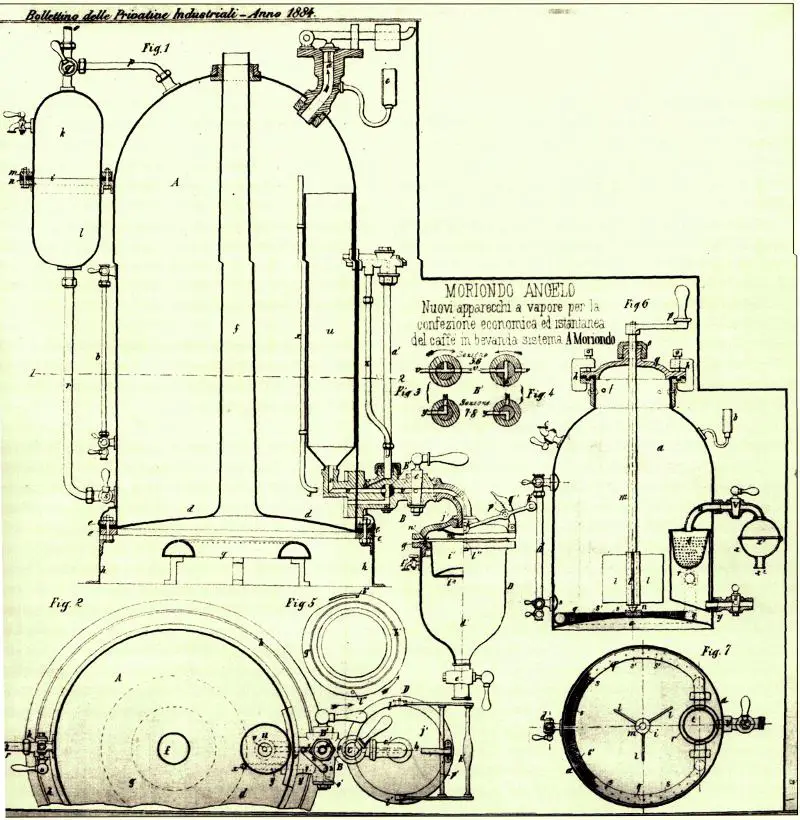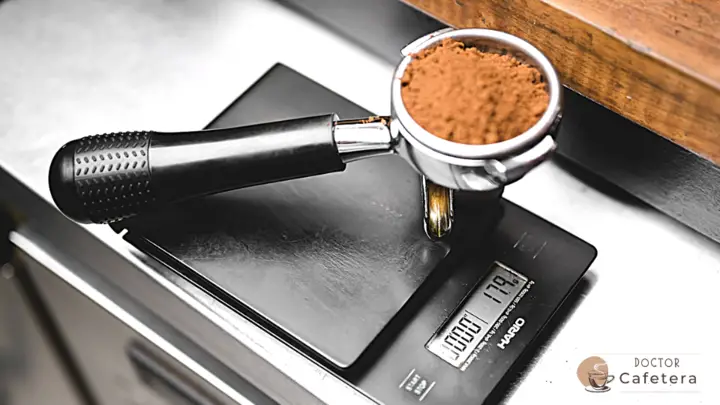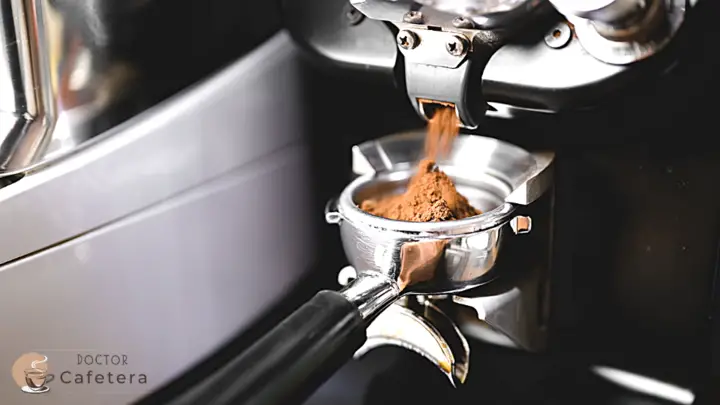This is the first of several articles I would like to write exclusively about espresso. To know and understand espresso, you must first acquire theoretical knowledge. As this may be a bit extensive, today, I will only deal with the concepts of dosage, ratio, grind, and temperature.
What is an espresso?
Espresso is a coffee-making method where a small amount of water is forced through the finely ground coffee, under intense pressure and in a short time. The result is a drink of 1 to 2 ounces, intense, full-bodied, with a great flavor and incredible aromas that transform it into one of the world’s most complex and beloved beverages.
The first espresso machine was created in Italy in 1884 by Angeló Moriondo, but it was in 1901 that Luigi Bezzera turned it into the type of machine we know today.
Don’t miss my article on espresso cream, where I talked about the evolution of the espresso machine.
How to prepare a good espresso?
As in any recipe, the most important ingredients are the coffee and water of excellent quality, the latter filtered but not distilled. The minerals in the water help to bring out the flavor of the coffee, although if there are too many, they can damage the coffee maker. Once we have our ingredients, the complicated part begins; where do I start?
The necessary dose to prepare an espresso
First, you have to look at the capacity of the portafilter basket of your coffee maker and start there. Many home coffee makers have a maximum capacity of 14 grams, so, in that case, that would be the value you would have to use.
You can play a little more with the dosage if you have a high-end machine. As a general rule, we can say that:
- Coffees with a darker roast (also lower in height) are easier to extract, so a higher dosage is recommended.
- Coffees with lighter roasts and higher altitudes are more difficult to extract, so starting with a low dosage is recommended.
Note: This is only a guide to see where to start testing.
The ratio to prepare espresso
Then we have another variable called ratio, the relationship between the amount of coffee we put in and the amount of final beverage we obtain.
As a general rule, we know that the espresso should have a ratio of 1:2; for each gram of coffee, we will obtain 2 grams of the final beverage.
Suppose we place 18 grams of coffee in the portafilter and obtain 50 grams of espresso in a cup. In that case, there will be more extraction since there will be more contact time between the coffee and the water, and there will be less intense, which are the dissolved solids of the coffee in the final beverage.
For example, if we place 18 grams in the portafilter and obtain 20 grams in the cup, it will be more intense, but it will have less extraction.
As a guide, we know that coffees with a light roast and great height go better with a final beverage of greater volume, and those of darker roasts with less height go better with a final beverage of less volume.
The necessary grinding to prepare espresso
The third variable will be the grind, which goes hand in hand with the brewing time. When we change the grind, we will obtain a different intensity and extraction with the same amount of final beverage.
A finer grind will give us a higher intensity and extraction with a longer time, and a coarser grind will give us a lower intensity and extraction with a shorter time. The time will indicate how long it will take to reach the final beverage.
The temperature to prepare espresso
The fourth variable is the water temperature. The higher the temperature, the greater the intensity and extraction. A higher temperature (around 95 degrees) is recommended for coffees with light roasts to help develop it. And for coffees with darker roasts, a lower temperature (around 90 degrees) is recommended to avoid over-extract it.
These four variables, the dose, the ratio, the grind, and the temperature, have to be accompanied by our taste buds. There is a device called a refractometer that allows you to measure the number of dissolved coffee solids in the final beverage and thus find the correct extraction. But it is quite expensive and can be achieved without having one.
By simply tasting and training our palate, we can distinguish what changes we should make to achieve a good espresso.
This concludes the espresso theory to understand before starting with the extraction. In the next articles, we will practice these variables and see the step-by-step preparation of espresso with some tips, so it will be clearer in which case you have to make each change.
You may be interested in:


